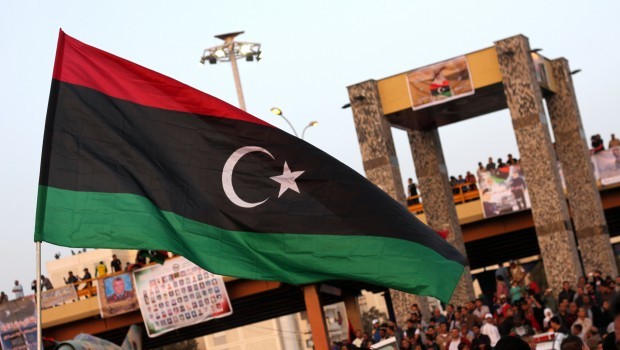During the 2011 uprisings against Libyan leader Muammar Gaddafi’s 40-year rule, demonstrators raised the tricolor flag of the monarchy. That flag somehow reassured the Libyan people—not because they wanted the monarchy to return, but because the flag symbolized the national unity experienced under King Idris Al-Senussi.
Ever since the flamboyant Gaddafi fell from power, the world has been waiting for Libya to stabilize. Last week, Libya’s interior minister threatened to “unleash” a wave of migrants to Europe—an insult to the migrants, Europe, and the Libyan people. This is exactly what Gaddafi used to do. At a 2011 Arab League meeting, Italy’s then-prime minister, Silvio Berlusconi, kissed Gaddafi’s hand when he promised to end thuggery. But it was Libya, rather than Europe, that Gaddafi flooded with African migrants. During the revolution, Gaddafi used those migrants as mercenaries to fight those Libyans protesting his rule—and the protesters responded by lynching migrants.
Who is ruling Libya today? All the councils, governments and prime ministers we see do not count as a proper government. The current chaos is creating a false sense of legitimacy for Gaddafi’s rule, his thugs and the farce that was constantly taking place in the colonel’s vulgar, colored tent.
There is no central unifying power in Libya today. Over his 40 years in power, Gaddafi prevented any other national leaders from emerging. After his removal, the randomly implemented political isolation law prevented people like National Transitional Council chairman Mustafa Abdel-Jalil and one-time interim prime minister Mahmoud Jibril from continuing their efforts to prevent Libya becoming a failed state. Suspicious calls for autonomy were soon raised, and tribal tensions long fed by Gaddafi deepened.
Libya wasted 40 years on Gaddafi’s destructive and pointless rule, and it is still hopelessly mired in chaos. Gaddafi destroyed every institution, from the military establishment to the economy to schools and universities. Libyan writer Ahmed Ibrahim Al-Faqih once noted that while Gaddafi blocked students’ access to stationery, his son, Saif Al-Islam, spent a million pounds on a PhD certificate.
When Libyans—whose land once had seemingly unlimited resources—look at their country today, all they can see is mass destruction and politicians who share Gaddafi’s discourse, if not his flamboyance.
